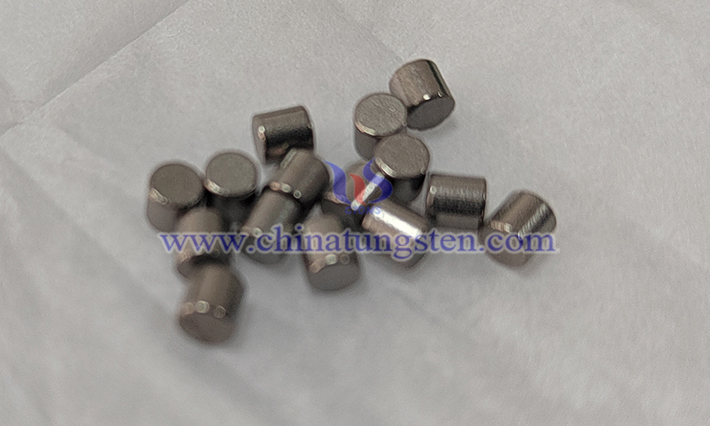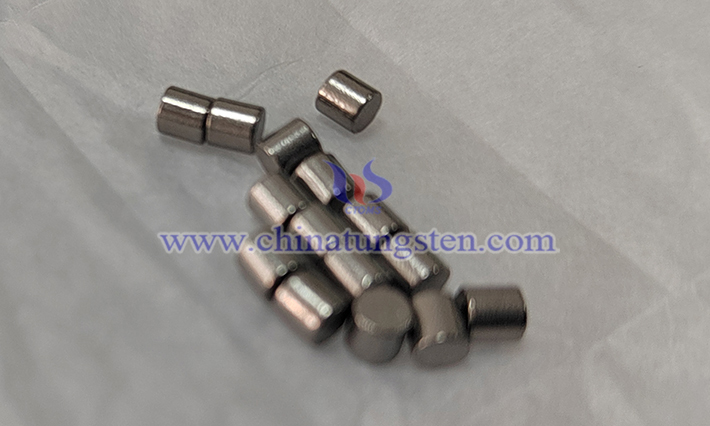Factors Affecting the Stability of High-Frequency Electric Field of Barium Tungsten Electrode
- Details
- Category: Tungsten Information
- Published on Tuesday, 03 June 2025 17:55
The stability of barium tungsten electrode (usually refers to barium tungsten cathode, a hot cathode electron emission material) in high-frequency electric field (such as microwave tube, magnetron, traveling wave tube, etc.) is its core performance indicator. The factors affecting the stability of high-frequency electric field of barium tungsten electrode mainly include the following aspects:
1. Barium Supply and Active Layer Formation
1.1 Diffusion Rate of barium: At the cathode operating temperature, barium compounds (such as BaO, BaAl₂O₄, BaCaAl₂O₄) in the pores of tungsten sponge decompose and release barium atoms. Barium atoms diffuse through the pores to the cathode surface to form a single atomic active layer that reduces the work function. The diffusion rate must match the rate of barium consumption (evaporation, ion bombardment, chemical reaction) on the surface. Too slow diffusion will lead to insufficient active layer and unstable emission; too fast diffusion may lead to too fast exhaustion of barium and shorten the life.
1.2 Composition and Uniformity of Impregnation: The chemical composition of the impregnation (such as the ratio of aluminate and calcium aluminate) directly affects the release rate, release temperature and vapor pressure of barium. The uniformity of the distribution of the impregnation is also crucial. Local unevenness will lead to inconsistent surface work function, causing uneven and unstable emission.
1.3 Pore Structure and Distribution: The porosity, pore size and distribution of the tungsten matrix determine the storage capacity and diffusion channel of barium. The ideal pore structure can provide a continuous and stable barium flow. Pore blockage or unevenness will hinder diffusion, resulting in insufficient barium supply in local areas.

2. Working Temperature
2.1 Optimal Temperature Window: There is an optimal working temperature range for barium tungsten cathodes. If the temperature is too low, the barium diffusion rate is too slow to maintain a sufficient surface active barium layer, and the emission capacity is reduced and unstable. When the temperature is too high, the evaporation rate of barium increases sharply (following an exponential relationship), resulting in the rapid consumption of barium reserves, the increase of work function due to the excessive thickness of the active layer, the increase of surface roughness (forming hot spots), and the accelerated poisoning reaction with residual gas, which seriously undermines stability. Thermal management (heat dissipation) in high-frequency applications is extremely critical to maintaining stable temperature.
2.2 Temperature Uniformity: Uneven temperature distribution on the cathode surface is an important cause of high-frequency instability. Local overheating areas (hot spots) will preferentially evaporate barium and accelerate material degradation, resulting in concentrated emission current, which may cause sparking, flickering noise or oscillation. Excessive temperature gradients can also lead to uneven barium diffusion.
3. High-Frequency Electric Field and Current Load
3.1 Current Density: High-frequency applications usually require very high emission current density. Excessive current density will:
(1) Accelerate Barium Consumption: Reduce the work function through the Schottky effect, but also greatly increase the evaporation rate of barium.
(2) Enhance Ion Bombardment: Positive ions generated by the ionization of residual gas under a strong electric field bombard the cathode surface, sputtering off the active barium layer and damaging the surface structure.
(3) Causing Space Charge Effect and Instability: Under extremely high current density, the space charge effect is complicated and may cause dynamic instability such as oscillation and noise.
3.2 Electric Field Strength and Distribution: The strength and uniformity of the high-frequency electric field and the presence of local field enhancement (such as sharp edges and micro-protrusions) directly affect the uniformity of electron emission. Strong electric fields can significantly reduce the work function through the Schottky effect, but may also cause field emission instability and even cause vacuum breakdown (sparking). Uneven electric fields can lead to uneven current density distribution and local overheating.
4. Vacuum Environment and Residual Gas
4.1 Vacuum Degree: High vacuum (usually required to be better than 10⁻⁵ Pa or higher) is the basis for stable cathode operation. Insufficient vacuum means high density of residual gas molecules.
4.2 Cathode Poisoning: Residual gases (especially oxidizing gases such as O₂, H₂O, CO, CO₂) react chemically with active barium to generate non-radiative barium compounds (such as BaO, BaCO₃), which cover or consume the active barium layer, increase the work function, and sharply reduce and become unstable in emission capacity. Even very low partial pressures (such as oxygen in the order of 10⁻⁷ Pa) can cause significant poisoning. Strong electric fields and ion bombardment in high-frequency applications sometimes exacerbate the poisoning process.
4.3 Ion Bombardment: Positive ions generated by residual gas ionization bombard the surface under the attraction of the negative potential of the cathode, physically sputtering barium atoms, destroying the active layer and surface morphology, resulting in emission reduction and increased noise.

5. Manufacturing Process and Material Purity
5.1 Purity of Raw Materials: The purity of tungsten powder and impregnation salt is crucial. Impurities (such as certain metals, sulfur, phosphorus, etc.) can poison the cathode, hinder barium diffusion, form high work function areas, or induce abnormal electron emission points.
5.2 Pressing and sintering: The pressing density, sintering temperature and time of the tungsten matrix directly affect the pore structure, mechanical strength and electrical and thermal conductivity.
5.3 Impregnation Process: The uniformity and completeness of the impregnation and the subsequent process of removing excess impregnation salt have a decisive influence on the storage and supply stability of barium.
5.4 Surface Treatment and Activation: The cathode needs to undergo a strict aging (exhaust, baking, activation) process after being loaded into the tube shell. The activation process (usually applying DC or pulse voltage at a specific temperature) is critical to the formation of a uniform and stable active barium layer. Improper aging will bury the hidden danger of instability.
6. Aging and Life
6.1 Barium Reserve Consumption: As the working time accumulates, the barium compound reserves in the impregnation are continuously consumed. When the consumption reaches a certain level and it is impossible to maintain sufficient barium supply, the emission begins to decay and the stability deteriorates. This is the main factor determining the life of the cathode.
6.2 Pore Degradation: Long-term high-temperature operation, ion bombardment, thermal stress cycles, etc. may cause deformation, blockage or sintering of the pore structure, hindering the diffusion of barium.
6.3 Surface Morphology Changes: Evaporation, sputtering, thermal migration, etc. may increase the surface roughness, forming micro-protrusions or pits, affecting the electric field distribution and emission uniformity.
7. Thermal Design and Heat Dissipation
As mentioned above, temperature is the core influencing factor. The cathode in high-frequency devices is often under high heat load. Good thermal design (such as cathode support structure, heat conduction path, radiation heat dissipation) is essential to stabilize the cathode temperature within the optimal window and ensure the temperature uniformity of the entire cathode surface. Poor heat dissipation will lead to an increase in temperature runaway and quickly destroy stability.
- Chinatungsten Online: www.tungsten.com.cn
- CTIA GROUP LTD: en.ctia.group
- Tungsten News & Price: www.ctia.com.cn
- Molybdenum News & Price: news.molybdenum.com.cn
- Tel.: 86 592 5129696; Email: sales@chinatungsten.com



 sales@chinatungsten.com
sales@chinatungsten.com